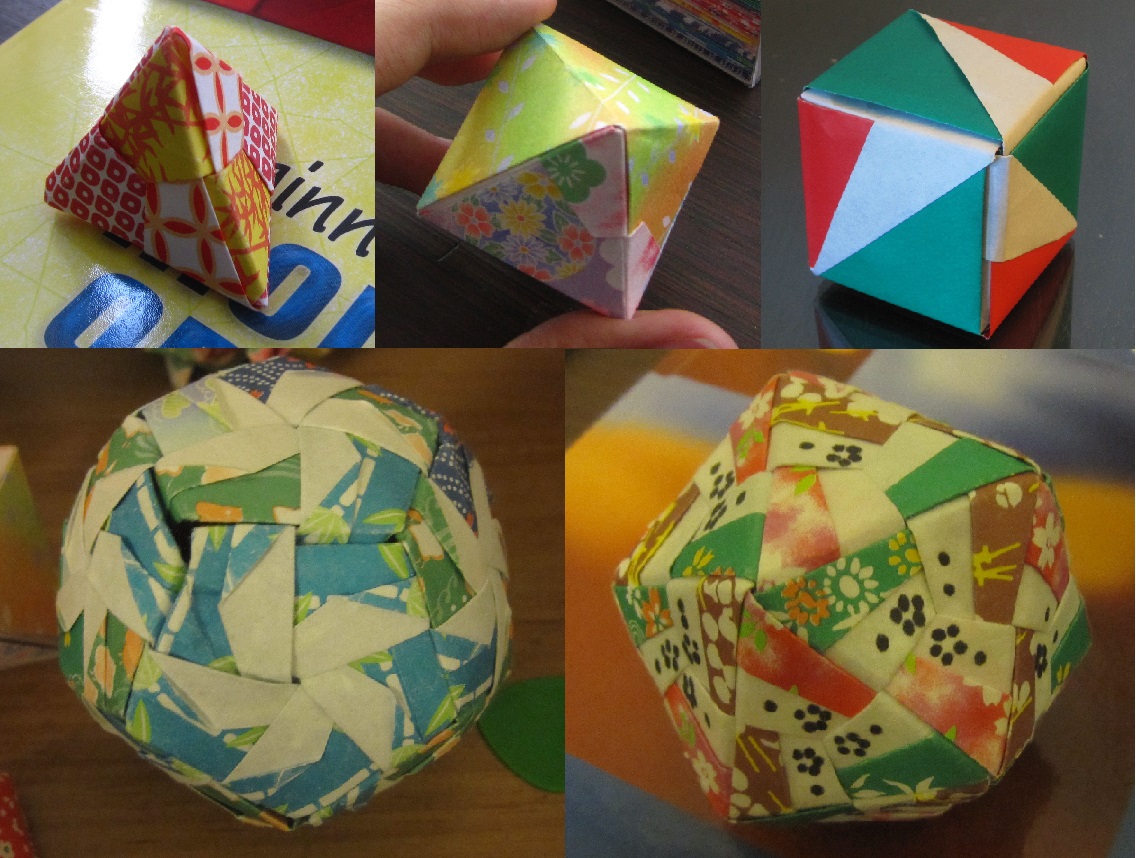When I was very young, I remember doing some math problems where I was given a shape, and asked whether there was a line of symmetry. This seemed very basic to me even at the time, and I thought that was all there was to it. But there is, in fact, much more. This has been particularly impressed upon me by my work in modular origami. For example, some of the most basic shapes I can make are the Platonic solids, which are very symmetrical indeed.

These are models I’ve folded for each of the platonic solids. From left to right, top to bottom: tetrahedron, octahedron, cube, dodecahedron, icosahedron.
Unfortunately, if you really want to understand the kind of symmetry extant in origami, you might need to take a course in advance mathematics. Specifically, this would be taught in Abstract Algebra, and even more specifically, finite group theory.
I intend to write a series explaining some of the basic concepts behind the symmetry of origami, but in a way that people can understand even without being into math. This isn’t necessary to creating or appreciating symmetrical origami, but you may find it helpful or interesting. For the readers who are into math, I hope you enjoy a more visually-oriented discussion of a topic that is typically discussed in rather abstract terms.
Articles in this series so far:
1. What is a symmetry group?

Leave a Reply